Kaira Looro Architecture Competition 2021: Women’s House. Inbetween: a house and a garden for women in Baghere village by Aristotelis Kaleris in collaboration with Ioannis Lykouras and Pille Noole.
The objective of the competition was the creation of a “Women’s House” with a symbolic aspect and an easy to build and environmentally friendly structure.
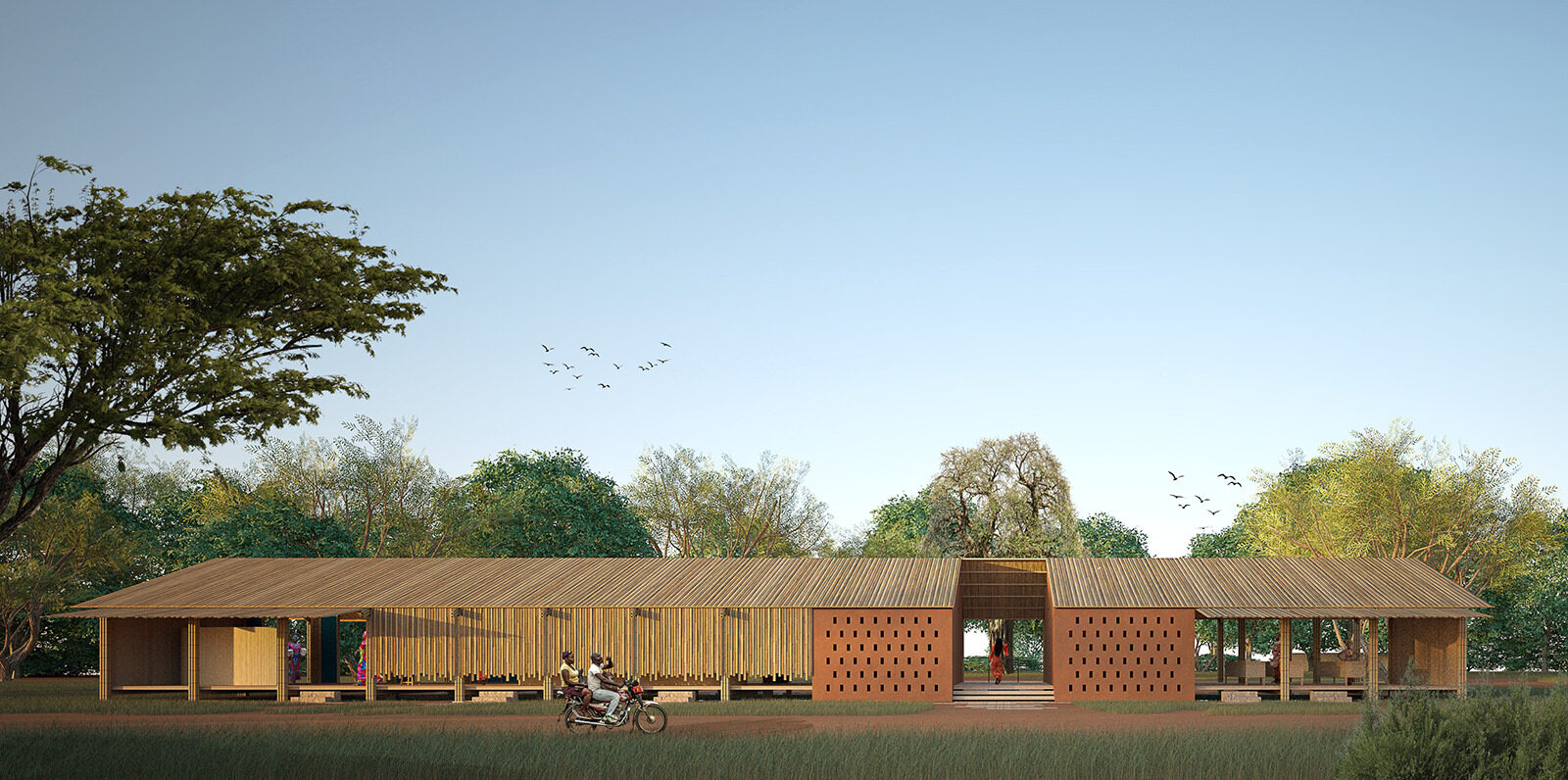
This “house” will be located in Baghere village at Tanaff valley Senegal and will be used for hosting meetings, seminars, labs, and any other activity that could be useful in reducing forms of discrimination, strengthening and promoting gender equality.
How can architecture represent and come to the defence of gender equality?
Most of the time we think that only exert of power, economics or legislation can aid to overcome a status quo. In this endeavour, we are trying to unfold the latent power of architecture to establish situations in place and time which, through dynamic and mutual relationships, can alter their physical and cultural context.
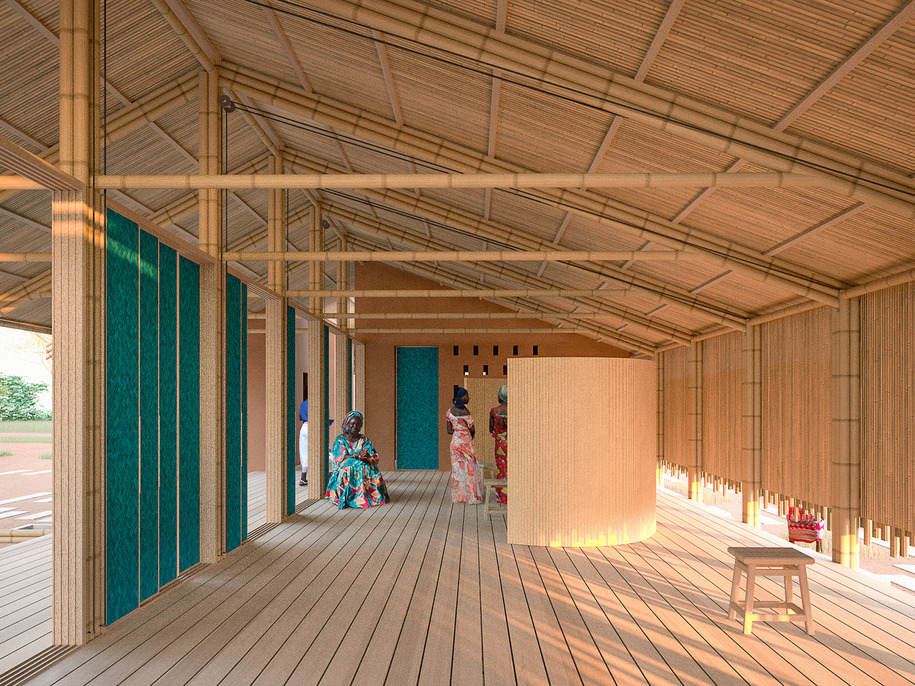
On the one hand, all the provided data about gender equality and the conditions of Senegal women’s everyday life, especially in countryside areas as the Tanaff Valley, dictate that a space dedicated for women’s should be, feel and look like as a sanctuary.
On the other hand, the vision of this competition is to surpass the threshold of inequity and lead women to claim their place as equal, independent, strong and actively involved members of society.
This concealed, desired, twofold relationship of the project with its environment gave birth to the main idea of the design.
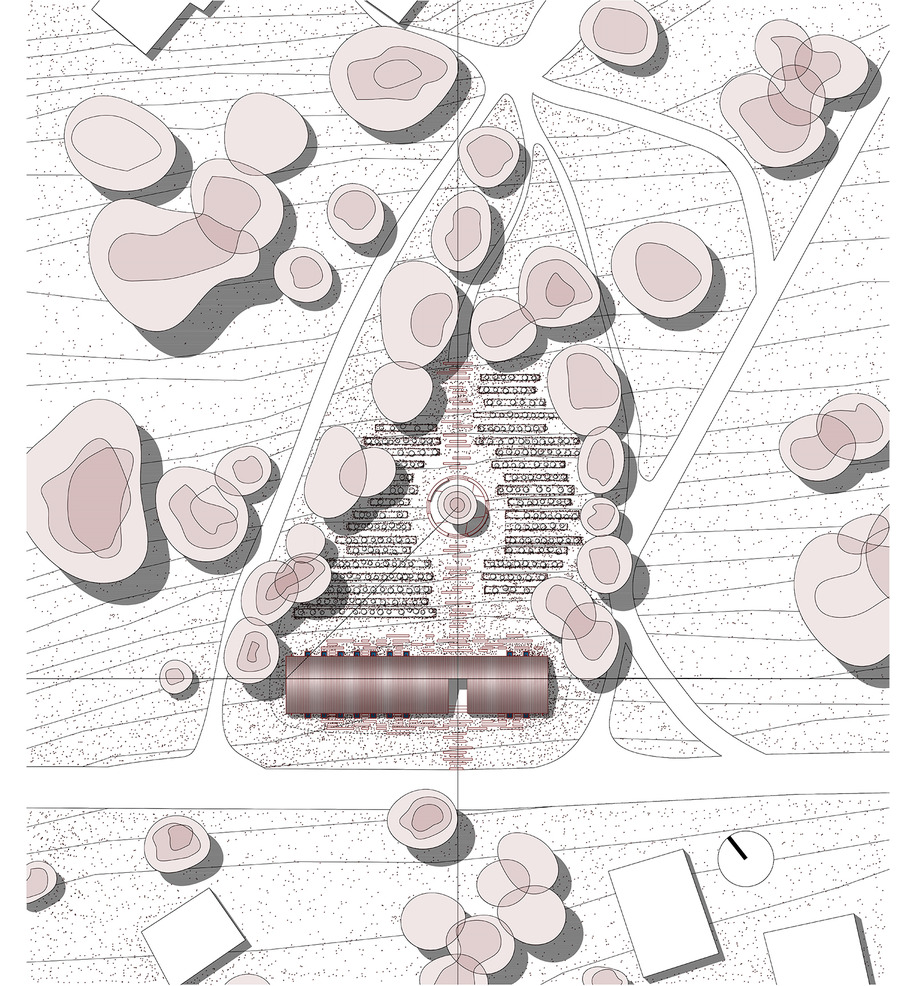
The main gesture of the proposal is the creation of an asymmetrical gable roof, with split bamboos as roof tiles, that extends along the southwest part of the site. The roof construction continues tο the façade panels so that basically creates a third vertical fold of the roof that defines not only the spaces inside the roof as “interiors” but also the rest of the site. At the same time, there are some architectural handlings that aim to surpass this strict separation and establish a latent, more public character to the building.
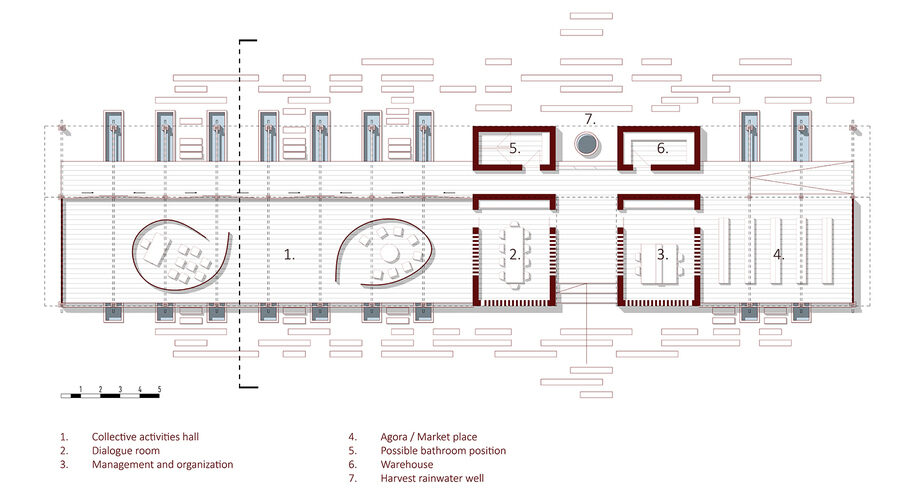
The elevation of the pavilion’s floor that leaves the earth level to exceed to the other side implies the continuity and the gap that is created between the crinkle bottom of façade panels and the floor that leaves a glimpse of the inside are some of these operations. The desired public character of the house can be achieved in the most pronounced way with the use of a pulley system that lifts the façade panels, transforming the house into a public covered walkway.
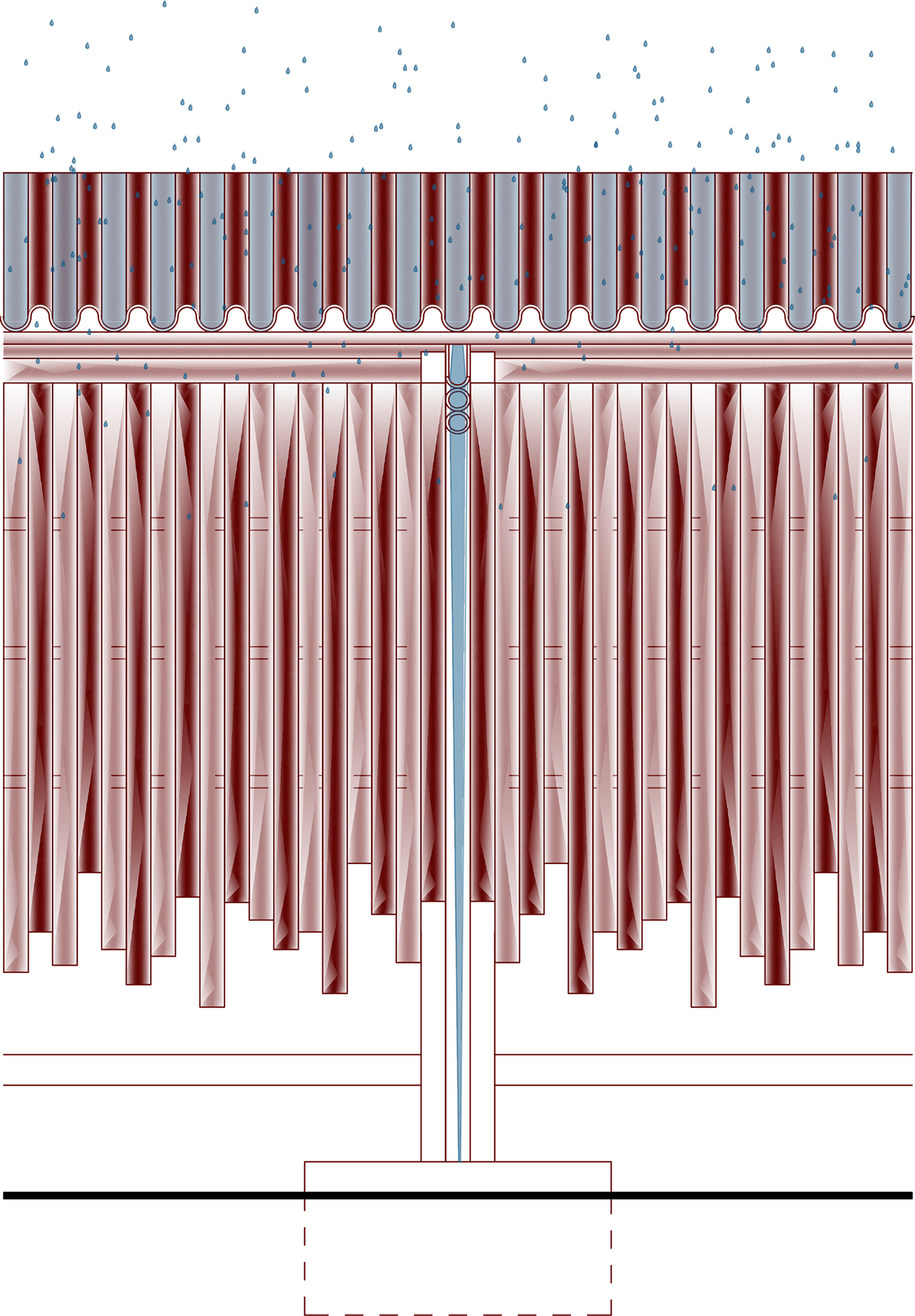
The provided site was seen as an opportunity to give land property to women, a property that they would normally not be entitled to and wouldn’t get profits from. So with the positioning of the house along the street we have the ability to transform all the inner part of the site into a garden.
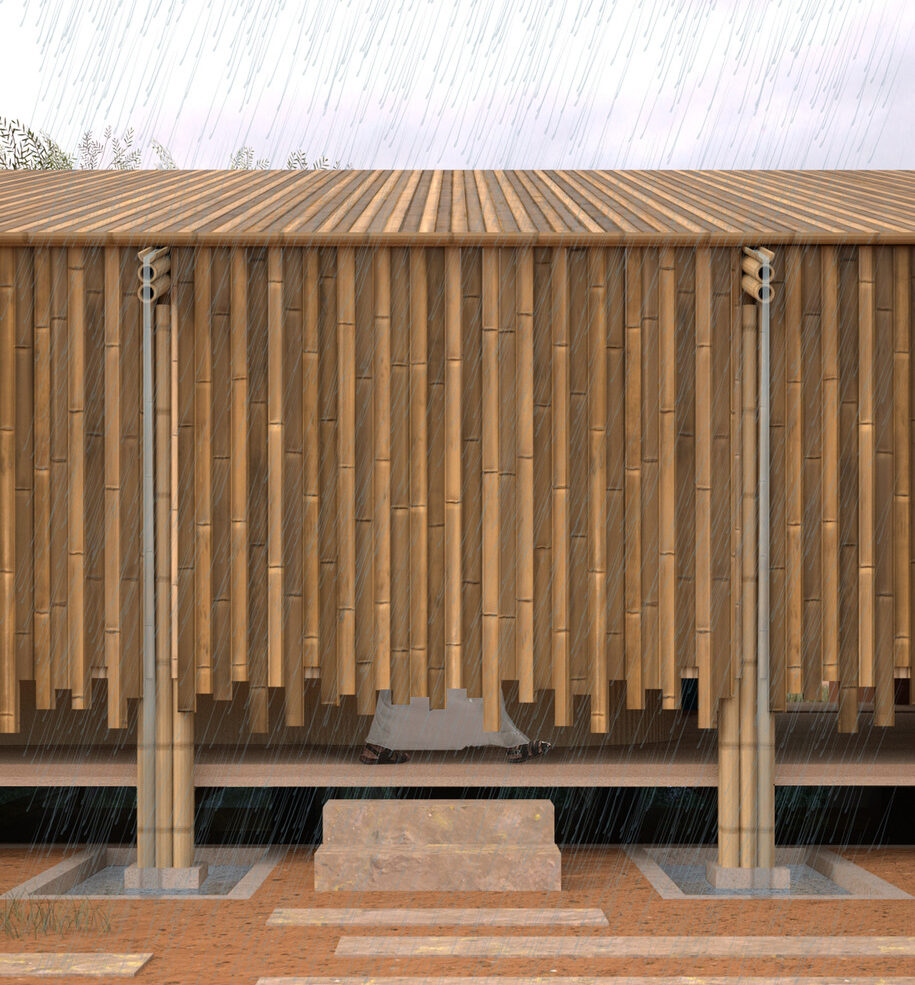
The roof of the building is used for harvesting rainwater, leading the water to an underground tank for watering. This tank is also used for passive cooling. The wind is free to flow on its surface and cool it by evaporation. At the same time, the cross ventilation under the roof creates upward airflow and cool air rises from the water surface, through the permeable flooring and into the interior.
Detailed plans
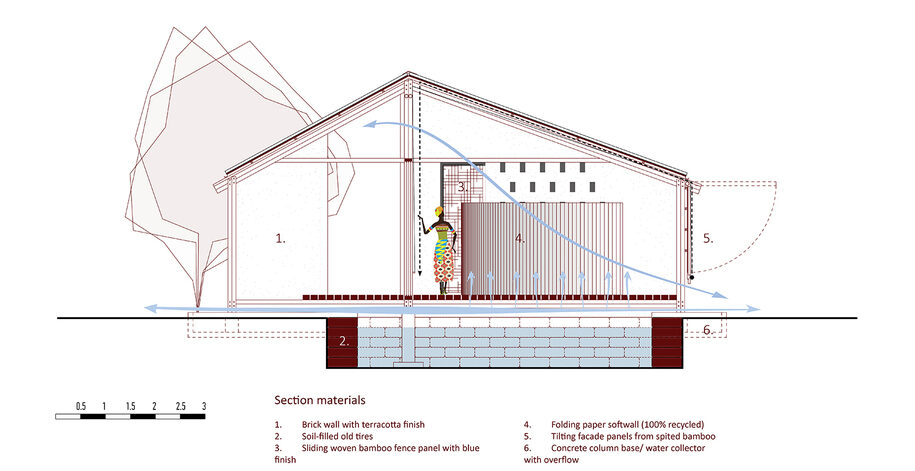
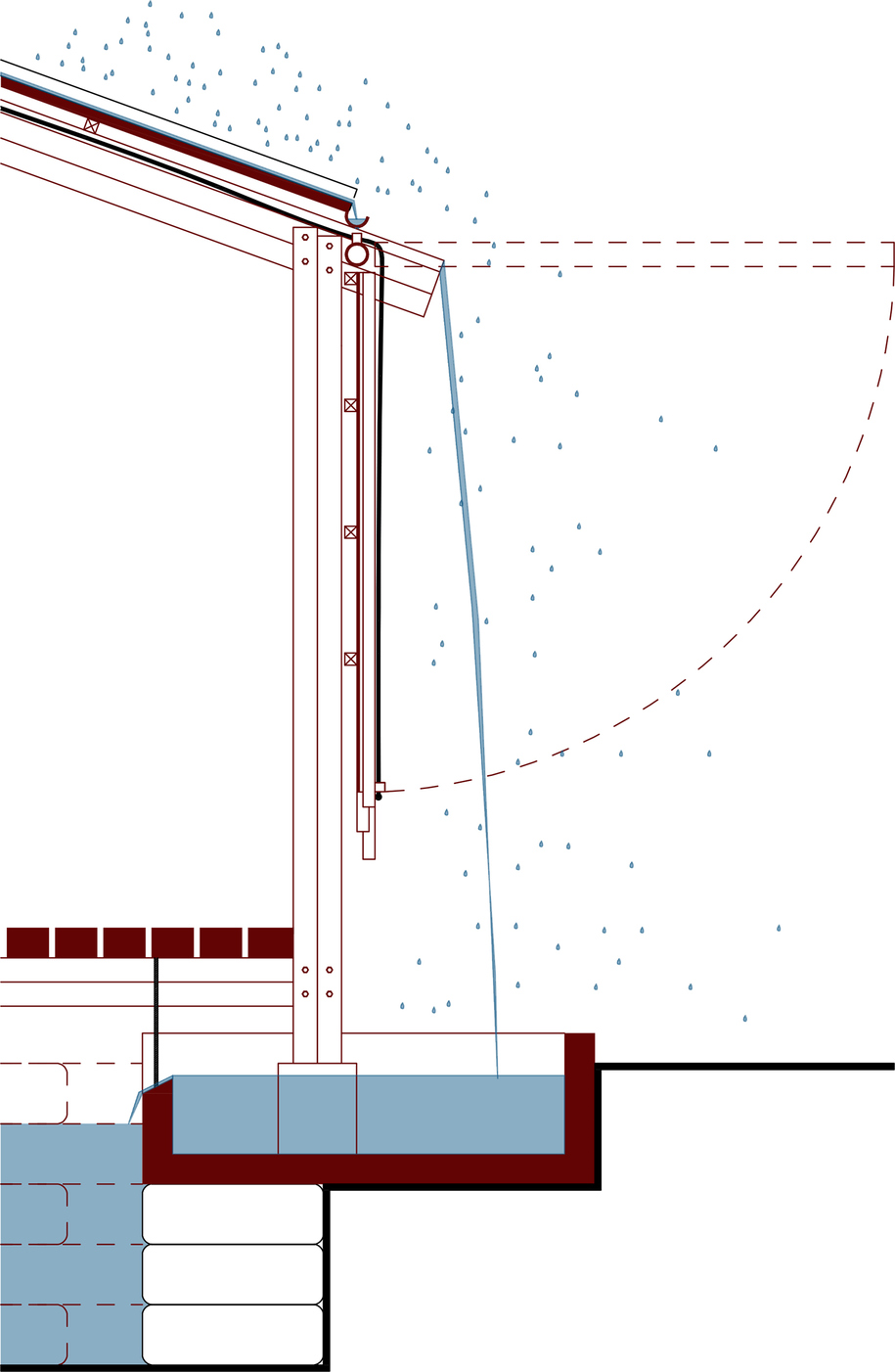
Credits & Details
Competition: Kaira Looro Architecture Competition 2021: Women’s House
Submitted project title: Inbetween: a house and a garden for women in Baghere village
Design team: Aristotelis Kaleris in collaboration with Ioannis Lykouras and Pille Noole from LÜNK arhitektid office in Tallinn
Date: May 2021
READ ALSO: House in Minohshinmachi at Osaka, Japan | Yasuyuki Kitamura